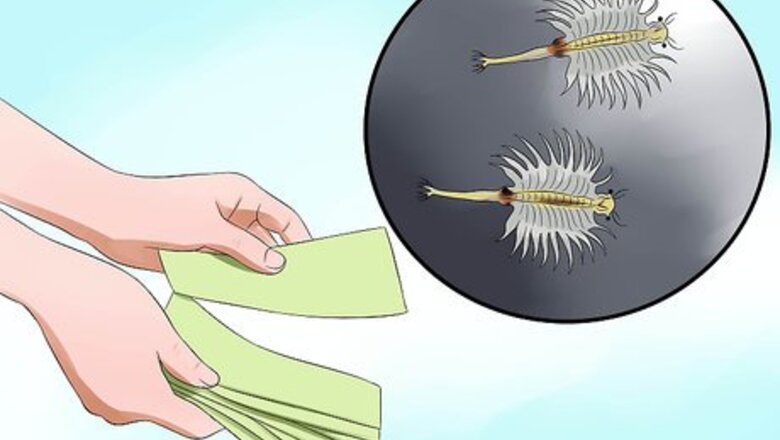
views
Getting Everything You’ll Need to Raise Sea Monkeys

Decide how you want to purchase your sea monkeys. There are a number of ways you can go about purchasing your sea monkeys. Ultimately, like other aquatic creatures, they require an aquarium or something similar to live and thrive. You can take several routes to purchase what you'll need. Consider: Buying a kit that comes with everything. There are a number of sea monkey kits available in retail stores and on the internet that come with everything you’ll need to get started growing sea monkeys. These kits come with tanks, the monkeys, a food packet, and more. This might be the easiest route to go. Buying the sea monkeys and other supplies separately. This could be a more inexpensive option if you have an aquarium or a tank already. However, this could be a more expensive option if you don’t. Ultimately, buying everything separately instead of in a kit allows you to customize your sea monkeys' environment. Buying live sea monkeys. Unfortunately, some people buy their sea monkeys and don’t want to keep them anymore. You could choose to adopt someone else’s sea monkeys or buy already grown ones from a pet store. This, though, takes some of the fun out of the magic of hatching your sea monkeys from nothing. However, if you do this, you might give some homeless sea monkeys a desperately needed break.
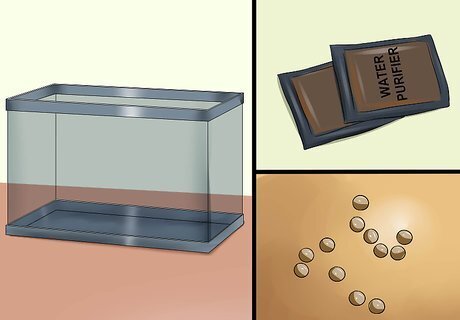
Purchase your supplies if you didn’t buy a kit that comes with everything. Because sea monkeys are so easy to care for, you don’t really have to buy much to prepare for them. However, there are a few things that are absolutely necessary. You will need: A water purifier. The water purifier comes in a variety of forms. It might be a gel or liquid, or it could be a dry pack of solution. A pack of sea monkey eggs. A pack of sea monkey growth food. A plastic or glass aquarium of 1/2 gallon to 10 gallons. Accessories like plastic plants or rocks.
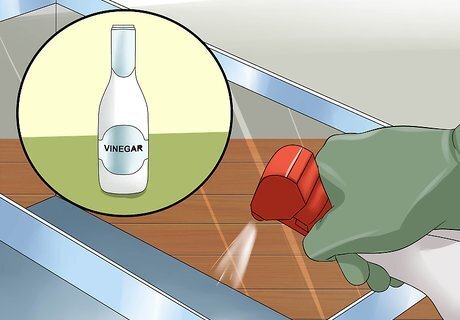
Clean and prepare the tank. Before you start to grow your sea monkeys, you need to clean the tank or aquarium you’ve purchased for them. This is important as new aquariums might have chemical films still on them from production. Older aquariums might have bacteria or other waste present. Your aquarium should be clean of all dirt and contaminants before you fill it. Clean the tank with water if possible. Avoid using soap. Use vinegar and/or a plastic scrubber to loosen dirt and grime. If you’ve used something other than water, make sure to rinse the tank thoroughly before filling it with water.
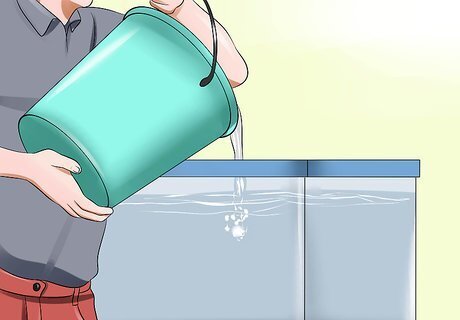
Fill the tank with purified water. Since water is your sea monkey's habitat, you must use distilled or purified water to keep the creatures healthy. Do not use water that has chlorine or any other chemicals in it. Be wary of tap water if possible. Avoid mineral water.
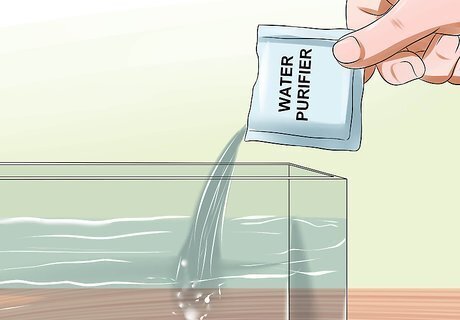
Add your water purifier. Open the pack of water purifier and pour its contents into the water. The water purifier is intended to balance the chemical makeup of the water and help create an appropriate environment for your sea monkeys. Stir the water so the purifier can more easily spread throughout the tank. Wait at least 24 hours before moving on to the next step. After you’ve added your water purifier, make sure your water has adjusted to room temperature before continuing on, even if this is longer than 24 hours. Room temperature is considered 76 degrees Fahrenheit or 27 degrees Celsius.
Hatching Sea Monkey Eggs
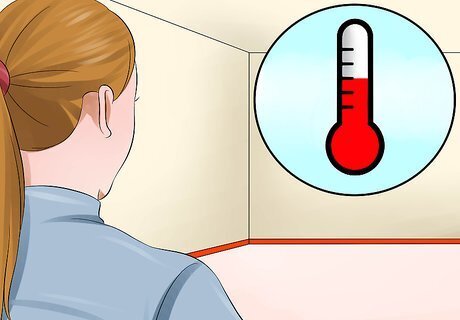
Find a suitable place for your sea monkey tank or aquarium. Since sea monkeys are relatively easy to care for and can thrive in a number of different types of environments, you shouldn’t have a problem finding a suitable place to put your tank. However, there are a number of things you do need to consider when placing your tank: The best temperature range for hatching sea monkeys is 75-80 degrees Fahrenheit (24-27 degrees Celsius). Colder temperatures will slow your hatching and growth time. Place your aquarium in a place where it will get sunlight, but not too much direct sunlight.

Add the live eggs into the purified water. Now that you’ve got your water purified, you can open your pack of sea monkey eggs and empty them into the water. After emptying the pack, stir the water for about a minute so the eggs can have a chance to spread out. You don’t want your sea monkeys all hatching in one place! Cut open the packet and dump it into the water. Using the food stick (which will be included in any kit), gently stir so you do not damage any eggs. Be patient. Sometimes the sea monkey’s take longer to hatch and sometimes hatching is not really “instant.”
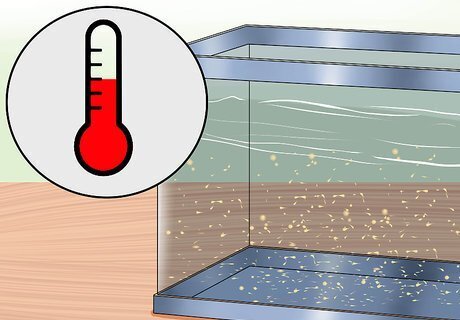
Wait for the eggs to hatch. The amount of time sea monkeys will take to hatch varies on a number of factors. Ultimately, there is no guarantee about the amount of time they will take to hatch. Some sea monkeys will hatch very quickly, others could take days. The factors that impact hatching time are: The temperature of the water. Cold water (below 75 degrees Fahrenheit) will slow hatching. Hatching could take several days if the water is cold. The thickness of sea monkey egg shells. Thicker egg shells will delay sea monkey hatching by up to several days. The combination of water temperature and egg shell thickness can produce a wide range of sea monkey hatching times.
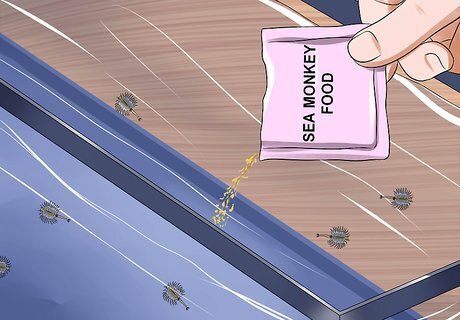
Add sea monkey growth food, after five days. After five days, you need to give your sea monkeys growth food. This growth food comes with most kits or can be purchased separately. The growth food is specially formulated to give your monkeys the mineral mix during the first week so that they can grow to maturity. Wait five days to give your monkeys the growth food. Don’t give them more than the package and the size of the tank requires. Don’t substitute something else for the growth food. After you add your growth food, your water might turn slightly green. Don't be alarmed. This is normal.
Caring for Sea Monkeys
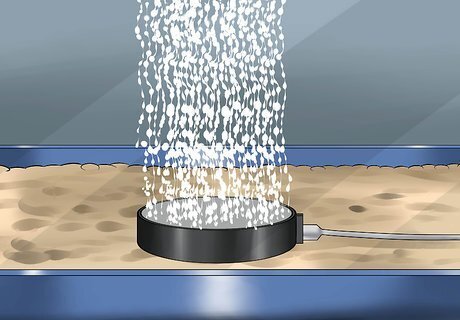
Aerate your tank regularly. Aeration is one of the most important things in caring for and keeping your sea monkeys alive. Aerating is the process in which oxygen is added to the water of the tank. Your sea monkeys need oxygen-rich water to survive and thrive. Consider: Aerate at least once a week. If you choose to aerate your water by pouring it back and forth, remove your sea monkeys with an aqua leash or similar device and put them into an alternate tank first. Take a straw and blow air into the tank every couple of days. Buy an aerating system that will continually aerate the water. Baby sea monkeys consume and need a great deal of oxygen in the beginning of their life.
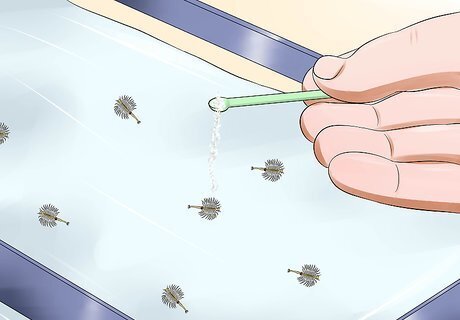
Feed your sea monkeys. After you initially feed your sea monkeys growth food, you need to feed your sea monkeys every five days. This makes sure they have enough food to grow and thrive in your tank. Feed them the appropriate amount as directed on the package. Never feed them more than once every five days. Only feed them sea monkey food. Sea monkeys often supplement their food supple with algae and other plant life that grows in the tank.

Add water to replace evaporated water. You’ll want to make sure that your tank maintains the same level of water over time. To do this, you need to replace your water from time to time. It’s probably best to schedule a time every week when you’ll add more water to your tank. Replace evaporated water with non-chlorinated water. Make sure any new water is the same temperature as the existing tank water. You don’t want to add super cold or hot water. Pour the water in slowly so you don’t hurt or disturb your friends.
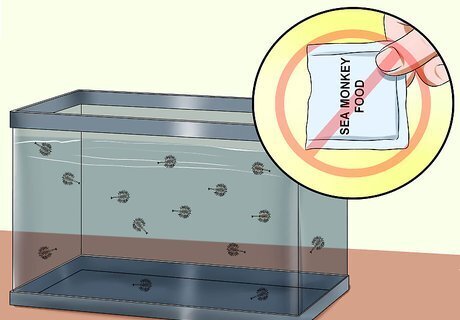
Keep the water in your tank healthy. Sometimes you might notice that the water in your tank is a little cloudy or dirty. When this happens, don’t drain the water or clean it. Chances are, there’s too much food or other organic material in the tank. You need to give the monkeys time to do their job. Simply stop feeding them for a little bit. When the water is cloudy, stop feeding them and wait a few days. If your water is cloudy, make sure your water is aerated. If the water does not clear up after a few days, you may need to transfer your sea monkeys and replace the water. Avoid cleaning your tank. If you can, don’t clean your tank too often. Sea monkeys live off of algae (in addition to their normal food) and will eat the algae that’s growing in their tank.













Comments
0 comment